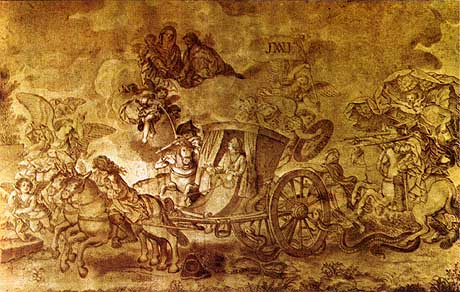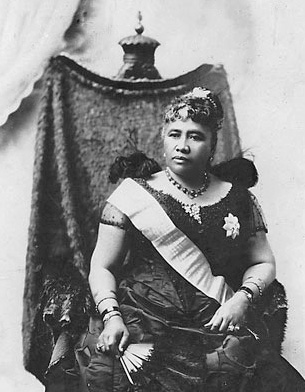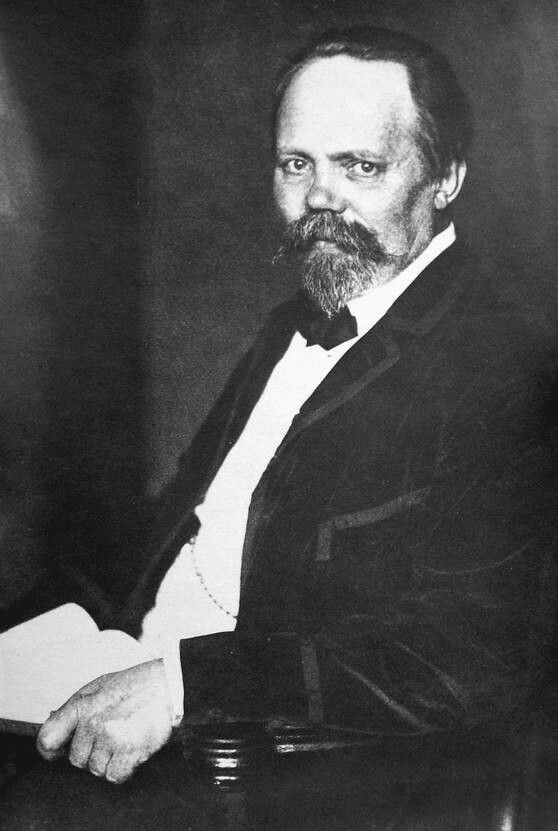quarta-feira, setembro 04, 2019
Edvard Grieg morreu há 112 anos
Postado por
Fernando Martins
às
01:12
0
bocas
![]()
Marcadores: Edvard Grieg, música, Noruega, Peer Gynt, romantismo
José Luís Peixoto - 45 anos
o teu rosto à minha espera, o teu rosto
a sorrir para os meus olhos, existe um
trovão de céu sobre a montanha.
as tuas mãos são finas e claras, vês-me
sorrir, brisas incendeiam o mundo,
respiro a luz sobre as folhas da olaia.
entro nos corredores de outubro para
encontrar um abraço nos teus olhos,
este dia será sempre hoje na memória.
hoje compreendo os rios. a idade das
rochas diz-me palavras profundas,
hoje tenho o teu rosto dentro de mim.
in A Casa, A Escuridão (2002) - José Luís Peixoto
Postado por
Fernando Martins
às
00:45
0
bocas
![]()
Marcadores: José Luís Peixoto, literatura, poesia
terça-feira, setembro 03, 2019
Freddie King nasceu há 85 anos
Postado por
Fernando Martins
às
08:50
0
bocas
![]()
Marcadores: blues, Chicago blues, Freddie King, funk, Going Down, guitarra, música
Há 261 anos ocorreu um atentado que mudou a nossa História
Postado por
Fernando Martins
às
00:26
0
bocas
![]()
Marcadores: atentado, D. José I, Duque de Aveiro, Marquês de Pombal, Marquês de Távora, Távoras
O infame massacre de Beslan foi há quinze anos...
in Poesia 2001/2005 - Vasco Graça Moura
Postado por
Fernando Martins
às
00:15
0
bocas
![]()
Marcadores: Beslan, Chechénia, Inguchia, Islão, Massacre de Beslan, Ossétia do Norte, poesia, Rússia, terrorismo, Vasco Graça Moura
segunda-feira, setembro 02, 2019
A última rainha do Havai nasceu há 181 anos
Postado por
Fernando Martins
às
18:10
0
bocas
![]()
Marcadores: colonialismo, Estados Unidos da América, Havai, Lili'uokalani, Monarquia
Tolkien morreu há 46 anos
| [...]o cabelo dela era preto e sedoso, a pele clara, os olhos mais brilhantes do que os que vocês viram, e sabia cantar… e dançar. Mas a história estragou-se, e eu fiquei para trás, e não posso suplicar perante o inexorável Mandos.[...]. |
Tolkien
|
| É breve e simples [o epitáfio], a não ser por Lúthien, que tem para mim mais significado do que uma imensidão de palavras, pois ela era (e sabia que era) a minha Lúthien [...] Nunca chamei Edith de Lúthien, mas foi ela a fonte da história que, a seu tempo, se tornou parte de O Silmarillion. |
Tolkien
|
Postado por
Fernando Martins
às
00:46
0
bocas
![]()
Marcadores: J. R. R. Tolkien, literatura, literatura fantástica, O Hobbit, O Senhor dos Anéis
domingo, setembro 01, 2019
Engelbert Humperdinck nasceu há 165 anos
Postado por
Fernando Martins
às
16:50
0
bocas
![]()
Marcadores: Alemanha, Engelbert Humperdinck, Hänsel und Gretel, música, Ópera
A crise de reféns da escola de Beslan começou faz hoje quinze anos
A Crise de reféns da escola de Beslan (conhecida também como Cerco à escola de Beslan ou Massacre de Beslan) teve início no dia 1 de setembro de 2004, quando terroristas armados fizeram mais de 1.200 reféns entre crianças e adultos, na Escola n.º 1, da cidade russa de Beslan, na Ossétia do Norte.
Postado por
Fernando Martins
às
15:00
0
bocas
![]()
Marcadores: Beslan, Chechénia, Islão, Massacre de Beslan, Ossétia do Norte, Rússia, terrorismo
O Grande Sismo de Kantō foi há 96 anos
A strong typhoon struck Tokyo Bay at about the same time as the earthquake. Some scientists, including C.F. Brooks of the United States Weather Bureau, suggested the opposing energy exerted by a sudden decrease of atmospheric pressure coupled with a sudden increase of sea pressure by a storm surge on an already-stressed earthquake fault, known as the Sagami Trough, may have triggered the earthquake. Winds from the typhoon caused fires off the coast of Noto Peninsula in Ishikawa Prefecture to spread rapidly.
The Emperor and Empress were staying at Nikko when the earthquake struck Tokyo, and were never in any danger.
A tsunami with waves up to 10 m (33 ft) high struck the coast of Sagami Bay, Boso Peninsula, Izu Islands, and the east coast of Izu Peninsula within minutes. The tsunami killed many, including about 100 people along Yui-ga-hama Beach in Kamakura and an estimated 50 people on the Enoshima causeway. Over 570,000 homes were destroyed, leaving an estimated 1.9 million homeless. Evacuees were transported by ship from Kanto to as far as Kobe in Kansai. The damage is estimated to have exceeded USD$1 billion (or about $13,475 billion today). There were 57 aftershocks.
Altogether, the earthquake and typhoon killed an estimated 99,300 people, and another 43,500 went missing.
Amidst the mob violence against Koreans in the Kantō Region, regional police and the Imperial Army used the pretext of civil unrest to liquidate political dissidents. Socialists such as Hirasawa Keishichi, anarchists such as Sakae Osugi and Noe Ito, and the Chinese communal leader, Ou Kiten, were abducted and killed by local police and Imperial Army, who claimed the radicals intended to use the crisis as an opportunity to overthrow the Japanese government.
The importance of obtaining and providing accurate information following natural disasters has been emphasized in Japan ever since. Earthquake preparation literature in modern Japan almost always directs citizens to carry a portable radio and use it to listen to reliable information, and not to be misled by rumors in the event of a large earthquake.
Aftermath
Following the devastation of the earthquake, some in the government considered the possibility of moving the capital elsewhere. Proposed sites for the new capital were even discussed.
Japanese commentators interpreted the disaster as an act of divine (Kami) punishment to admonish the Japanese people for their self-centered, immoral, and extravagant lifestyles. In the long run, the response to the disaster was a strong sense that Japan had been given an unparalleled opportunity to rebuild the city, and to rebuild Japanese values. In reconstructing the city, the nation, and the Japanese people, the earthquake fostered a culture of catastrophe and reconstruction that amplified discourses of moral degeneracy and national renovation in interwar Japan.
After the earthquake, Gotō Shimpei organized a reconstruction plan of Tokyo with modern networks of roads, trains, and public services. Parks were placed all over Tokyo as refuge spots, and public buildings were constructed with stricter standards than private buildings to accommodate refugees. However, the outbreak of World War II and subsequent destruction severely limited resources.
Frank Lloyd Wright received credit for designing the Imperial Hotel, Tokyo, to withstand the quake, although in fact the building was damaged by the shock. The destruction of the US embassy caused Ambassador Cyrus Woods to relocate the embassy to the hotel. Wright's structure withstood the anticipated earthquake stresses, and the hotel remained in use until 1968.
The unfinished battlecruiser Amagi was in drydock being converted into an aircraft carrier in Yokosuka in compliance with the Washington Naval Treaty of 1922. However, the earthquake damaged the Amagi beyond repair, leading it to be scrapped, and the unfinished fast battleship Kaga was converted into an aircraft carrier in its place.
In contrast to London, where typhoid fever had been steadily declining since the 1870s, the rate in Tokyo remained high, more so in the upper-class residential northern and western districts than in the densely populated working-class eastern district. An explanation is the decline of waste disposal, which became particularly serious in the northern and western districts when traditional methods of waste disposal collapsed due to urbanization. The 1923 earthquake led to record-high morbidity due to unsanitary conditions following the earthquake, and it prompted the establishment of antityphoid measures and the building of urban infrastructure.
Postado por
Fernando Martins
às
09:06
0
bocas
![]()
Marcadores: Disaster Prevention Day, Grande Sismo de Kanto, Honshu, Japão, sismo, sismologia, Tóquio, Yokohama
Há 215 anos foi descoberto o 3º asteróide, Juno
| Juno | |
|---|---|
| Número | 3 |
| Data da descoberta | 1 de setembro de 1804 |
| Categoria | Cintura Principal (Grupo Juno) |
| Elementos orbitais | |
| Perélio | 1,988 UA |
| Afélio | 3,356 UA |
| Excentricidade | 0,2559 |
| Período orbital | 1595,4 dias (4,37 anos) |
| Velocidade orbital | 17,93 km/s |
| Inclinação | 12,968º |
| Características físicas | |
| Dimensões | 233 km |
| Massa | 2,67 × 1019 kg |
| Densidade média | 2,98 ± 0,55 g/cm3 |
| Gravidade à superfície | 0,12 m/s2 |
| Velocidade de escape | 0,18 km/s |
| Período de rotação | 0,3004 d |
| Classe espectral | Asteroide tipo S |
| Magnitude absoluta | 5,33 |
| Albedo | 0,238 |
| Temperatura | -110,1 ºC |
Postado por
Fernando Martins
às
02:15
0
bocas
![]()
Marcadores: asteróide, asteróides S, astronomia, cintura de asteróides, Juno, Karl Harding
A União Soviética abateu um avião coreano civil há 36 anos
O avião caiu no mar a 55 km da ilha Moneron, matando todos a bordo. Inicialmente, foi informado que o avião tinha sido forçado a pousar na ilha de Sacalina, mas depois foi provado que isso era falso.
As transcrições recuperadas da caixa negra do avião indicam que a companhia não estava atenta, que eles estavam fora de curso e violando o espaço de ar soviético (ao fim eles estavam mais de 312,5 milhas [500 km] para o oeste da rota planeada). Depois do ataque ao avião, a aeronave desceu em espiral de emergência devido à descompressão rápida às 18:26 GMT, até ao fim da gravação às 18:27:46 GMT. Porém, as autoridades soviéticas negaram algum conhecimento que tinham recuperado essa informação. Eles só as deram depois da administração de Yeltsin tomar o poder na Rússia.











